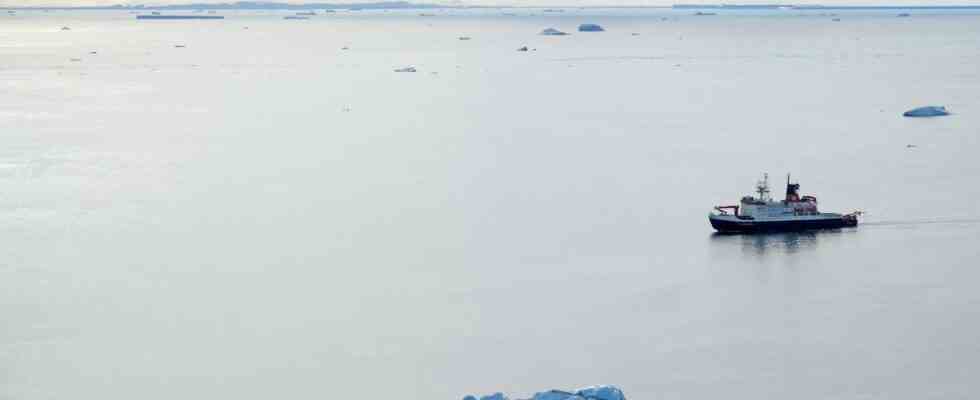Status: 02/10/2023 2:24 p.m
There is less sea ice in Antarctica than at any time since satellite observations began 40 years ago. However, the bottom has not yet been reached because the melting period is still ongoing – and researchers are sounding the alarm.
The sea areas covered by ice around Antarctica are currently shrinking more than at any other time in history. According to researchers, there has never been so little sea ice since satellite recordings began around 40 years ago. The record minimum is particularly worrying because it occurs well before the end of the summer melting period.
As reported by the Bremerhaven Alfred Wegener Institute (AWI) for polar and marine research, only 2.2 million square kilometers of the southern Arctic Ocean are covered by sea ice. The research icebreaker “Polarstern” reported that the conditions on the Arctic Bellingshausen Sea were almost ice-free, where an expedition team is currently collecting information about past ice ages and interglacial periods.
Melt continues, bottom not yet reached
The previous low since recording began, around 2.27 million square kilometers on February 24, 2022, would have been undercut. It is quite possible to achieve even less ice coverage during the summer melting periods this year. “Since the sea ice in Antarctica is expected to continue to melt into the second half of February, we cannot yet say when the new negative record will be reached and how much additional sea ice will melt by then,” explained sea ice physicist Professor Christian Haas.
According to Haas, the sea ice in the Arctic has decreased particularly sharply in the last six years. This development is “very amazing because the ice cover had hardly changed in the previous 35 years.” It is unclear whether this development indicates that there may soon be no more summer sea ice in the Arctic.
“Polarstern” drifts through ice-free waters
AWI expedition leader and geophysicist Professor Karsten Gohl has been in this region for the seventh time since 1994. He said: “I have never experienced such an extreme ice-free situation here before.” The research team on the “Polarstern” would have good working conditions due to the little ice, but the rapid change in the ice surfaces is questionable.
The extent of the strong melt is particularly striking when you take a look at the history books: In the southern summer 125 years ago, the Belgian research ship “Belgica” was involuntarily frozen in the massive pack ice for more than a whole year in exactly the area where the “Polarstern” can now operate completely free of ice.
The researchers from the AWI and the University of Bremen put their data on the so-called sea ice portal available. The site provides an overview of the current development of ice cover. Accordingly, September and October are considered the peak of the freezing of the seas, in February the ice then reaches its lowest coverage. At its maximum extent, sea ice coverage in Antarctica is generally between 18 and 20 million square kilometers.

